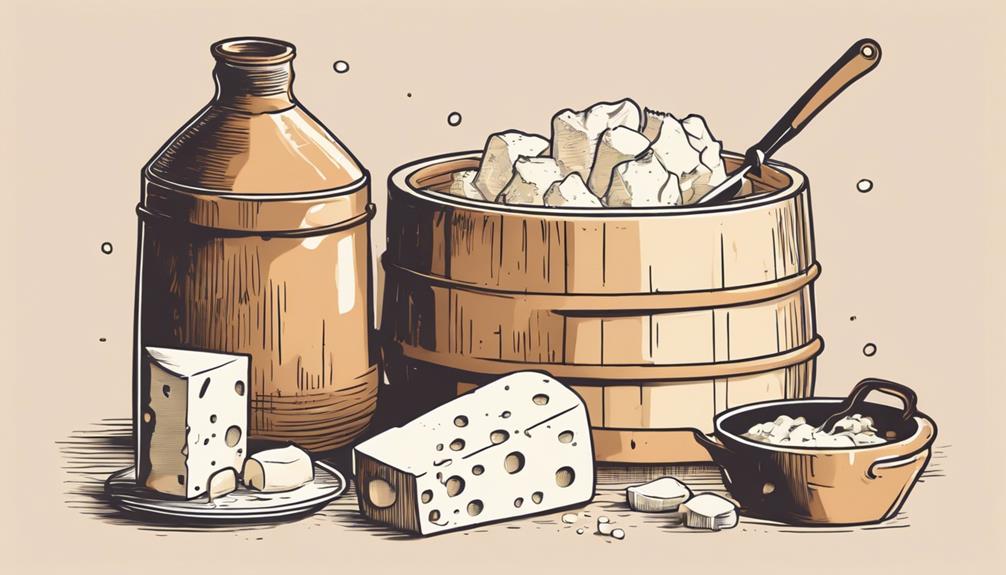See All: Cheese Making
Watch How To Do This Here…
YES! You can make cheese at home. Take our FREE 4-Part video training series to simplify cheesemaking for everyone. No waste. No overwhelm. No missing steps. You can make delicious, healthy cheese, even if you only have access to grocery store milk and regular kitchen equipment…
Click Here To Watch Step By Step Now
“I’m a home cheese maker in Toronto, Canada and I absolutely adore making cheese for my family and friends. Lately, though, I’ve been running into some trouble figuring out exactly when the curd is ready to be cut. It’s either too soft or too firm, making it difficult to achieve the perfect texture in my cheese. Can you help me understand what signs and tests I should be looking out for to determine the perfect time for cutting the curd? Any tips or tricks would be greatly appreciated!”
Thanks, Patricia, Toronto, Canada.
How Do You Know When The Curd Is Ready To Be Cut?
Hey Patricia! It’s fantastic to hear about your passion for home cheese making. Knowing when curd is ready to be cut is like mastering a fine art – it requires a good eye, a gentle touch, and a bit of patience. Let’s break it down so you can easily pinpoint that perfect moment every time.
Understanding the Importance of Cutting the Curd
Curd cutting is a pivotal step in the cheese-making process. Cutting helps to release whey and sets the stage for the texture and moisture content of the final cheese. If cut too soon, your curd will be overly soft and can result in too much moisture, leading to a mushy cheese. If cut too late, the curd can become too firm, causing a dry or crumbly texture. Both outcomes can significantly affect the quality and taste of your cheese.
Physical Signs the Curd is Ready
The most reliable way to determine if your curd is ready to be cut is by looking for a “clean break.” Here are some signs to watch out for:
- Appearance: The curd should appear glossy and firm but still have a gentle jiggle, almost like a soft set gelatin.
- Texture: The curd should feel firm to the touch but maintain slight bounce-back. It shouldn’t feel overly firm or break apart too easily.
These characteristics are generally achieved within a specific time frame, but relying solely on the clock does not always result in perfection. Patricia, using both visual and tactile signs is more reliable for consistent results.
The “Clean Break” Test
This is the gold standard for determining if curd is ready. Here’s how you do it:
- Insert the flat edge of a knife or a curd cutting tool into the curd at a 45-degree angle.
- Lift the curd slightly and observe how it breaks. A clean break should reveal clear whey standing apart from the curd.
If the break appears messy or milky, the curd needs more time. Check again after 5–10 minutes, being cautious not to disturb the curd too much in between checks.
Temperature and Timing Factors
Temperature plays a critical role in achieving the perfect curd. The goal is to maintain a steady temperature suitable for your cheese type. Usually, this is around:
- 85°F to 90°F (29°C to 32°C): Ideal for soft cheeses.
- 100°F to 105°F (38°C to 40°C): Suitable for firmer cheeses.
If the temperature fluctuates too much, it can affect coagulation, leading to inconsistent curd readiness.
Coagulation Brands and Ratios
The type of rennet and its concentration directly impact coagulation speed and uniformity. Though animal-derived rennet is commonly used, vegetable or microbial rennet can also be effective. The key is to follow the manufacturer’s guidelines regarding dosage for precise results.
Context and Adaptation
Different cheese types require different curd readiness. Patricia, think about the end cheese you’re aiming for:
- Soft cheeses will need a shorter coagulation time for a delicate texture.
- Hard cheeses need more time for a firmer curd, essential for aging.
Adapting to the specific cheese variety you’re making can drastically improve your outcomes.
Practical Tips and Tricks
Here are some extra pointers to help you master the timing:
- Use Fresh and Quality Ingredients: Fresh milk and rennet ensure better and more predictable curd formation.
- Maintain a Consistent Environment: Cheese making conditions like temperature, humidity, and cleanliness impact the process.
- Practice Patience: Waiting the extra few minutes for the perfect clean break is always worth it. Impatience can lead to undesirable textures.
Common Pitfalls and Their Fixes
Despite careful adherence to the process, things can go awry:
- Curd is too soft even after the ideal time: Check rennet potency and quantity; sometimes an extra dose is needed.
- Curd is overly firm quickly: Lower the coagulation temperature slightly and check the curd earlier.
Consistently documenting your process can aid in identifying patterns and making necessary adjustments.
Patricia, it’s worth noting that even the most experienced cheese makers experience occasional inconsistencies. Recording each batch’s specifics will help you fine-tune your technique over time.
Final Thoughts…
Thank you, Patricia, for your great question! Remember, the key signs for when a curd is ready to be cut involve visual and tactile cues indicating a clean break, along with maintaining optimal temperature and using the correct rennet dosage. With time and practice, achieving the perfect curd cut will become second nature.
Happy cheese making!
Return To: Cheese Making
Free Step By Step Cheese Making Videos…
YES! You can make cheese at home. Take our FREE 4-Part video training series to simplify cheesemaking for everyone. No waste. No overwhelm. No missing steps. You can make delicious, healthy cheese, even if you only have access to grocery store milk and regular kitchen equipment…

